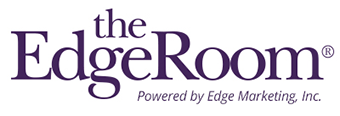by Tanya Amyote
What portion of your social media audience, or web site visitors, consumes your content with the aid of assistive technologies such as screen readers, magnification tools or software, eye trackers, etc.?
The World Health Organization indicates 2.2 billion people worldwide have some form of vision impairment, including colorblindness, low vision, near vision, or blindness, and one in four people in the U.S. identify as having at least one disability.
According to DiverseAbility Magazine, the disposable income for U.S. adults with disabilities is $490 billion! It’s also interesting to note that studies have also shown that, when people with disabilities find vendors, products, or service providers who make accessibility a priority, they become more loyal clients and customers.
While we can’t pin down the portion of our audience that uses assistive tech to consume our digital content, a best practice in 2021 is to assume that our audience includes people with disabilities.
Making an effort to prioritize accessibility on your social media and web site also says a lot about your company, and your team’s values.
So, how do you ensure you’re creating social media posts and digital content that are accessible to all? Here are seven tips that you can start implementing today:
- Use alt text for images: Describe the image, including content and context. Be concise, but don’t skimp on detail. Think of alt text as a supplemental tweet of about a hundred characters, and you don’t need to include “Image of”, or “graphic of”. A caption or alt text that says, “Image of a chart,” is not nearly as helpful or clear as one that says, “A bar chart that illustrates the number of social media users in the past five years, with 3.9 billion in July 2020.”
- Include closed captioning on your videos or enable auto-generated ones.
- If you are posting an image that contains text, ensure that the text is also included in alt text or in the body of the post. Your logo may be the smartest, most visually appealing logo that ever was but, if you don’t also have your company name somewhere in plain text, someone using assistive tech may not be able to catch it!
- Don’t rely solely on font color to differentiate text or other elements:
- On graphs and charts, avoid using solid colors to differentiate data; patterns and/or clarifying data labels are more easily discernible by people who are colorblind or who have other vision impairments.
- Don’t rely on color to convey that hyperlinked text is clickable: Also use underlines or hover animations.
- Optimize hashtags. We all know the benefits of using hashtags on social media: They can bring your content to a more varied audience than your post alone. Here are a few things to consider when crafting your hashtags:
- Write long hashtags in CamelCase: #careeropportunities will sound garbled and confusing to someone using a screen reader, but #CareerOpportunities will be read properly and will be more easily understood by the viewer as well.
- Use hashtags as part of the text or add extra hashtags in a comment on your post. See below for an example.
- Use a link shortener. It’s less annoying to hear a screen reader spell out 10 characters than 50!
- Example:
- Don’t do this:
- Post:
- Who’s going to the conference? Will we see you in Las Vegas? #lasvegas #tech #events https://edgemarketinginc.com/contact-edge-marketing/
- Do this:
- Post:
- We’re looking forward to the #conference in #LasVegas! Hope to see you there! https://t.co/LNCW6D06OZ
- Comment:
- #Tech #Events
- Post:
- Post:
- Don’t do this:
- Do content audits periodically: Are you using inclusive language that is gender-neutral, and not ableist or ageist? What about the people in your stock photos? Do the images reflect your efforts to foster diversity and inclusion
- Emojis: Use them, but sparingly! Be mindful that someone viewing your post with its 10 emojis needs to sit through their screen reader rhyming off every single one!
Diversity and inclusion are not just buzz words in 2021: They are the difference between equity and bias, accommodation and prejudice. Ensuring accessibility is a priority when creating your digital content can mean the difference between offering someone a seat at the table or making them build their own.
About the Author
Tanya Amyote joined the Edge team in December 2016 as marketing assistant, Excel guru, and token Canadian. When not solving the world’s pivot table problems, Tanya is an avid reader and fountain pen user.
As a person with Osteogenesis Imperfecta (brittle bone disease), Tanya is an outspoken advocate for diversity and inclusion, and accessibility.



